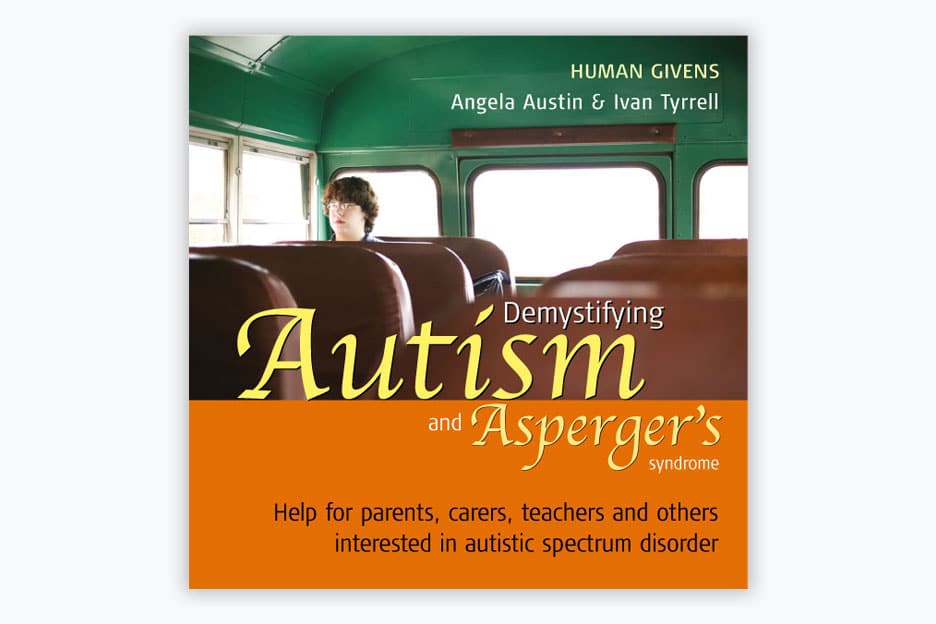Rediscovering a future
‘Nemo’ had been struggling with his mental health, work and relationships for over 20 years, but with the help of HG therapist Beth Hamilton he has finally been able to make real progress and understand himself better.
To express his appreciation, he recently gave Beth a hand-made thank you gift that beautifully encapsulates through inventive metaphor everything she’d helped him with….

Beth Hamilton
“When Nemo first came to see me, he had the look of a terrorised, cornered mouse in his eyes,” says HG therapist Beth Hamilton. “He was so nervous, he sat down and took a pack of playing cards out of his pocket and sat shuffling and fanning them throughout that first session, never once giving me eye contact. He reported his life was a mess with so many awful things currently happening that he just could not cope with it anymore.”
Nemo, a 51-year-old man with three children from three failed marriages, had been struggling with his mental health for more than twenty years. Unemployed for all that time due to high levels of anxiety and all the symptoms of PTSD, he had no relationship with any of his children or ex-wives.
The Sensory Vibrational EMDR he had received two years earlier for his PTSD had left him totally dysfunctional, resulting in him spending most of his days in bed, trying to sleep to block the world out, and panic stricken if anyone knocked on the door. Recently, he had been battling with social services, trying to be allowed contact with his daughter who had been taken into care twelve months earlier, but to no avail. As tears rolled down his face, he told Beth, “I just can’t do it anymore…”
Beth and PTSD Resolution have not only helped me start to heal the trauma but have helped me develop and recognise that I have all I need to thrive in the future
Nemo had been referred to Beth via the charity PTSD Resolution, which every year provides HG therapy free-of-charge to hundreds of military veterans, reservists and their families, helping them to overcome symptoms of PTSD and mental ill health and to move forward with their lives.
In their first session of therapy, Beth was able to quickly build rapport with Nemo, through storytelling and information gathering. “I told him the story of the two frogs falling into a jug of milk on the picnic table,” Beth says. “He told me he enjoyed drawing and showed me some photos of his drawings and said that a long time ago he made things out of wood.” Nemo’s biggest goal of therapy was to have the confidence to start going out and walking his dog alone. He also wanted to have some form of contact with his daughter.

“I asked him if he could help me understand him better by drawing (he’s a visual man) a ‘timeline’ of his life,” Beth continues. “In 90% of cases at the first meeting I try to work with a client to create a timeline – this visual representation of a person’s life is so powerfully revealing for them. And it is a useful working document at every session. I ensured Nemo understood that we would just label his memories, we would not open them up.”
Nemo’s timeline showed that he had excelled academically at school, but that he had struggled to make friends. His experience at College had been similar. He had then begun an Accountancy degree, but had left University before graduating. After twelve months in the army, he realised it was not for him, and had eventually joined the police. Here, he had excelled in various roles, loving the routine and the rules that the job provided. By this time, he’d met his first wife and they had had two sons together, but his wife was violent and abusive, so he had left her. Personal stresses, together with the anxiety of being an undercover police officer – and the victim of a serious physical attack – proved too much and he had begun to drink heavily. After his police career subsequently came to an end, he had married again and had a daughter, but his wife was psychotically violent and abusive. On one final occasion, the police had been called, his wife had been asked to leave the home and his daughter was taken into care.
Nemo later reported that that first session was monumental...
“When the timeline was completed,” Beth says, “we both sat back, and I asked him what he thought of it. “Wow,” he said, “What a lot has happened to me in these last twenty years”. “Yes”, I said “and you are only half-way through your life. But, as I look at this, I see the life of a highly intelligent man, a kind, helpful, compassionate man with a good moral compass and sense of justice. Look at this bit here, you love numbers, and this bit … you like routine, this bit tells me how honest you are and can never tell lies. But I also see a pattern, I don’t know if you can see it? Look, this … and that bit … and here as well. I wonder, what do you know about autism?” He reported very little.” ”
Nemo’s homework from Beth was to research ‘Autism’ and, whilst he was researching, he was to think of Einstein, Isaac Newton, Leonardo da Vinci, Mozart and Stephen Fry. “I explained that people use different operating systems, you might use Windows and I might use Apple. Doesn’t make either of us right or wrong, good or bad,” says Beth. She ended the session with another story – of the Great Sequoia trees in the Redwood Forest of Western America.
“Nemo later reported that that first session was monumental,” Beth reflects. “The lights came on for him and for the first time in his life he understood himself and was proud of who he is. He went on to get a professional diagnosis of autism as he would need this for the court case relating to contact with his daughter.”
You took each fragmented piece of me and showed me how to put the pieces back together again...
Nemo continued to attend therapy sessions with Beth, with life-changing results.

“Nemo now has structure and purpose in his life, he can walk his dog alone and he is now going out and about on his bike. He has joined several groups, and the relationship he has with his girlfriend is heart-warming,” Beth says. “He is not allowed direct contact with his daughter yet, so I suggested that he started writing letters and making drawings and metaphors to tell her how much he loves her.”
The pack of cards from the first therapy session never appeared again.
In their penultimate therapy session, Nemo gave Beth a beautiful box, which he had made from wood. In a moving letter (see below) he explained why he had made it the way he had…
For the first time in his life he understood himself and was proud of who he is...
Nemo's letter to Beth
“The box itself represents everything we have done together in therapy and my journey through therapy from the start to where I am now.
I made the box out of odd pieces of wood which I glued together because when I first contacted PTSD Resolution, I was broken and I was in pieces. But when I first came to see you Beth, you took each fragmented piece of me and showed me how to put the pieces back together again. How to make sense of the pieces, how I could join those parts of me back up together again so that I could function again. Although I still have a way to go yet, I feel I am back together again and in good order.
The box itself represents the boxes in my mind. I learned how to put all of that stuff that was rolling around inside my head into categories and by creating boxes in my mind I could compartmentalise my worries, anxieties and stress and all the rest and put each of it into separate boxes inside my head. When I do this the negative things do not leak out and blend with and spoil the good things in my life. I couldn’t fully see the good things before.
And then I realised, everyone must have boxes inside their minds.
I deliberately left the wooden pieces uneven because I am not perfect. You showed me there is a perfectly logical reason why I think and do things differently to other people. I simply use a different operating system than other people, Windows or Mac. But that doesn’t mean I am bad or no good, I have good qualities too, I am intelligent, kind, hard-working, etc, but it does explain all of those difficult things that happened in my past. All my life I have tried to mould myself to fit in with others, to be like them. But now I understand I don’t have to do that anymore. I am not perfect, but neither is anyone else.
I have left the gaps in between the layers of the wood because the gaps remind me of the many traumas I have experienced in my life but you showed me how to live with those traumas and it is these traumas that make me who I am today. And I can now feel proud of that.
I used beeswax to polish the wood (not varnish) because beeswax gives a perfect smoothness and soft glow. It is the smoothness and that shine that shows me how special I am, that I have superpowers, I have never understood, as I was described as odd and different. Through learning who I am I have learned to live with trauma. Despite having imperfections, we all have the ability to cope with traumatic experiences. Despite everyone having imperfections, it is this that gives them their own smoothness, beauty and power to cope with trauma.
The box itself has a practical use. As I was making it, I put all of the new learning, the new insights, the tools and the grounding techniques that you taught me, all of the stories and the metaphors you told me, everything went into the box.
Your box is not empty Beth, it holds the whole journey that you and I have made together. Beth has started me on a journey and I will always carry a box with me on that journey. Not just for the practical purposes, but also as a reminder of who I am and that I will always have the tools to take the next step. Beth and PTSD Resolution have not only helped me start to heal the trauma but have helped me develop and recognise that I have all I need to thrive in the future.”
Learn more
- Discover what makes human givens therapy different
- Read more case studies from PTSD Resolution here
- Beth Hamilton’s therapist’s page
- Learn more about PTSD Resolution
- Train to be a human givens therapist






